Catfish of the Chesapeake
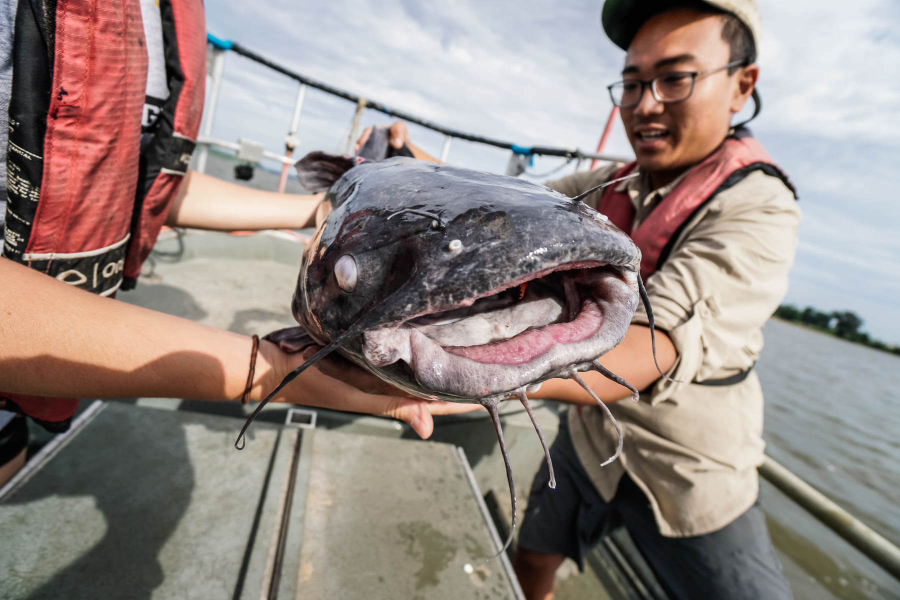
Catfish are large, smooth-skinned and come in a range of colors and sizes, but it is the distinctive, whisker-like barbels around their mouths that make them some of the most recognizable fish in the region. They rely on their sensory barbels to find prey, as they have fairly poor eyesight. Some of the catfish found in the Chesapeake are native to the region, while others were introduced and pose a threat to the native ecosystem. Learn more about six of the species that can be found in our watershed.
Native Catfish
1. Brown bullhead (Ameiurus nebulosus)
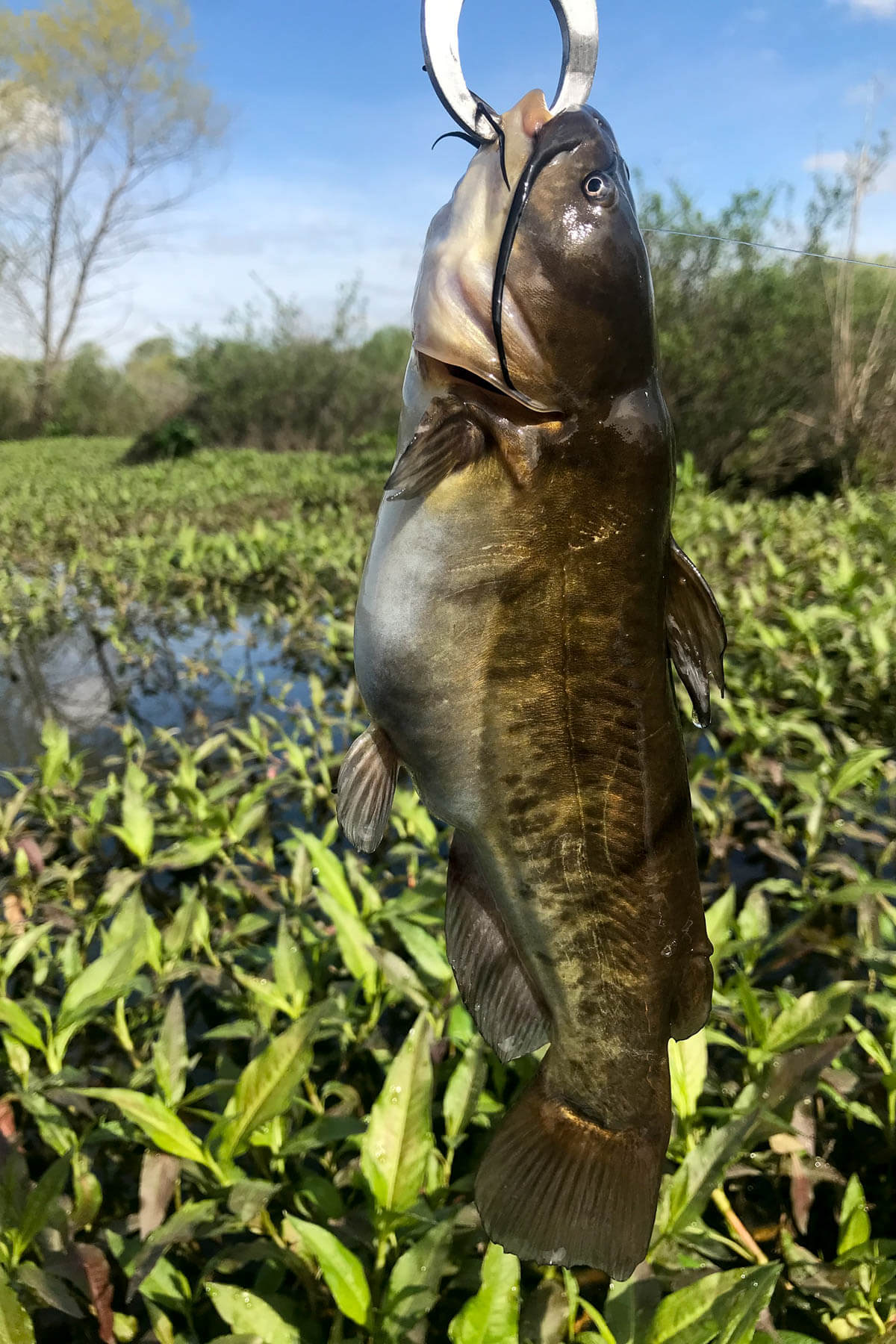
The brown bullhead is a freshwater catfish with a mottled, brownish body and slightly notched tail that grows to be about a foot in length. This species is native to the Chesapeake region and can be found in ponds, lakes, streams and rivers throughout the Bay watershed. They can tolerate a range of temperatures and oxygen levels and are able to survive in fairly polluted waters. On average, they live for about seven years.
2. Yellow bullhead (Ameiurus natalis)
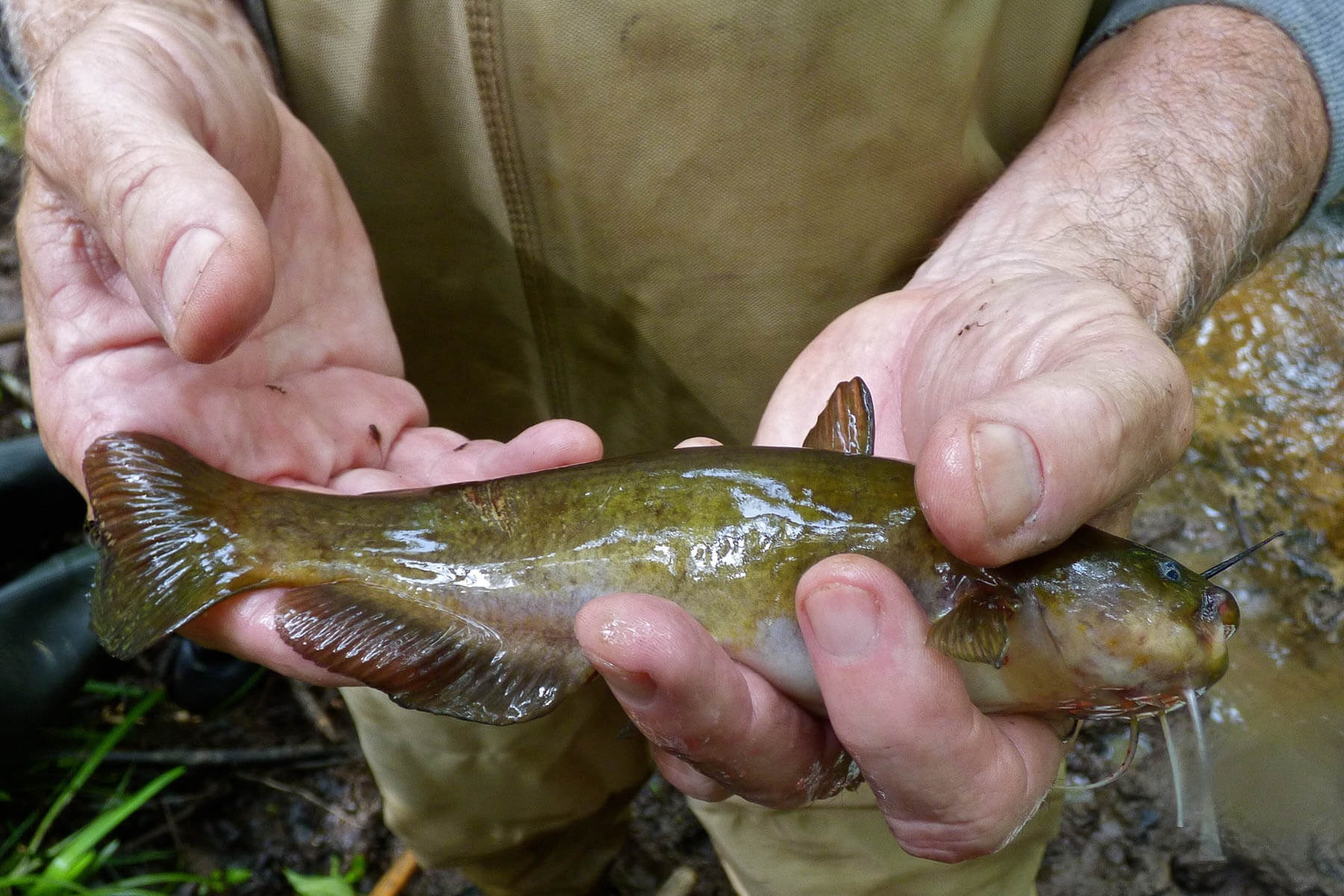
Yellow bullheads are quite similar to brown bullheads: they live for up to seven years, are about the same size, are found in the same types of freshwater habitats and are tolerant of poor water quality. The yellow bullhead can be distinguished from the brown bullhead by its rounded tail and the yellow-colored barbels on its chin—the brown bullhead’s chin barbels are dark.
3. White catfish (Ameiurus catus)
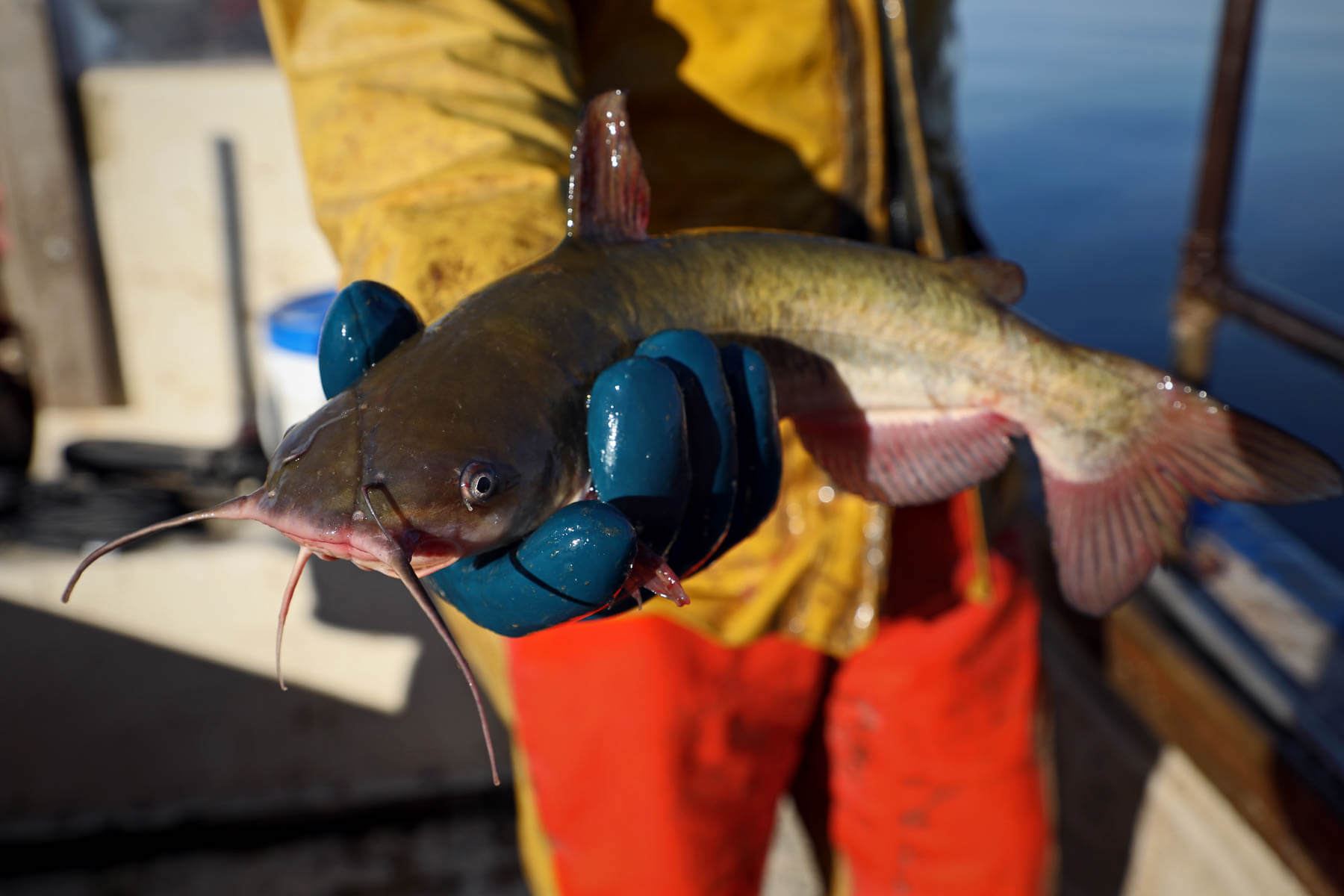
The white catfish is a member of the bullhead family that can be found in both fresh and brackish waters in the Chesapeake region. It averages about six pounds and just over a foot in length. White catfish have dark, blue-gray bodies with a white underside, white chin barbels and a forked tail with rounded lobes.
Nonnative Catfish
4. Channel catfish (Ictalurus punctatus)
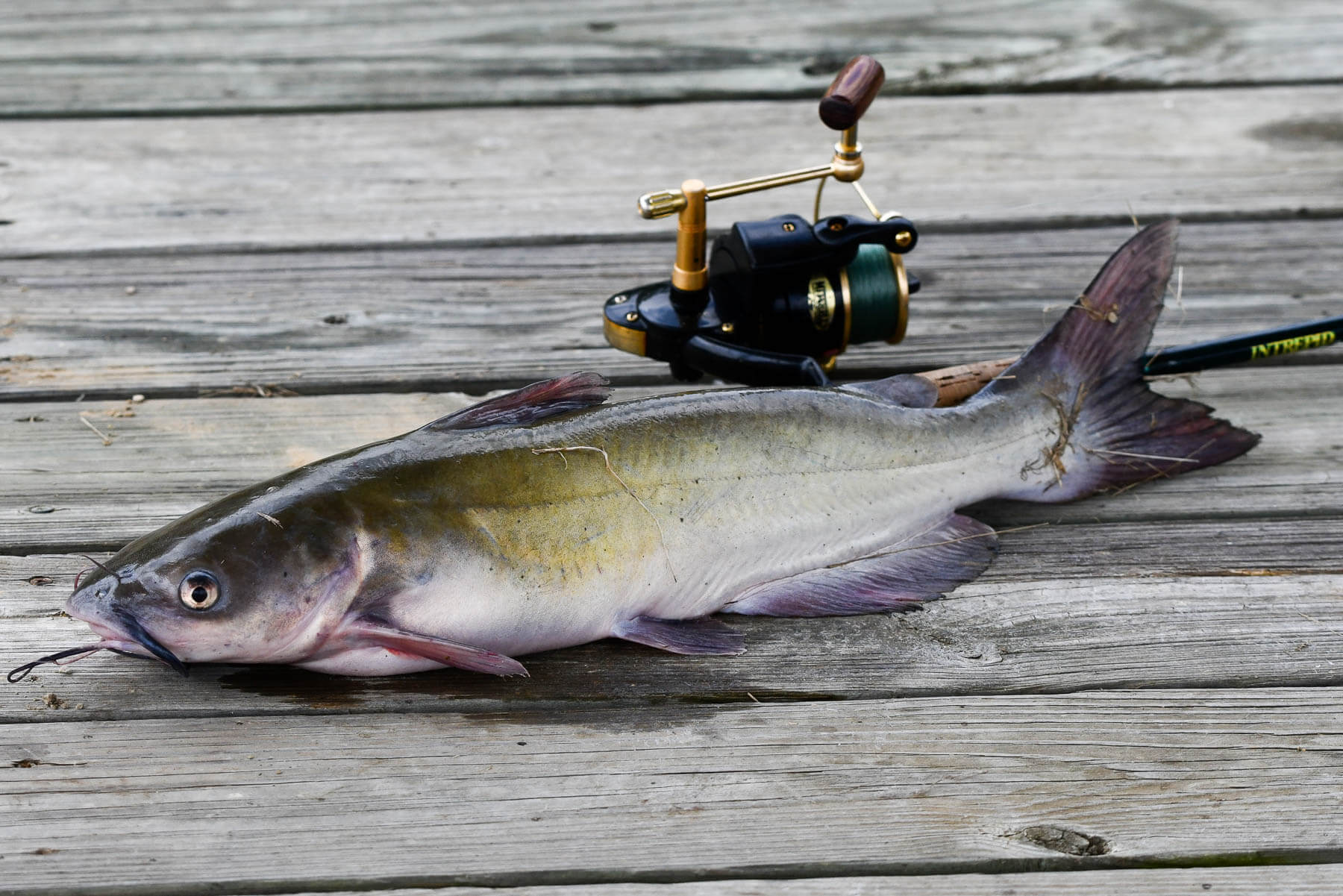
The channel catfish has a bluish- or greenish-gray body and a deeply forked tail. It lives in fresh and brackish rivers throughout the Chesapeake Bay watershed. Channel catfish are not native to the Chesapeake Bay region, but because they aren’t known to have negative impacts on native wildlife, they are not considered an invasive species.
Invasive Catfish
5. Flathead catfish (Pylodictis olivaris)
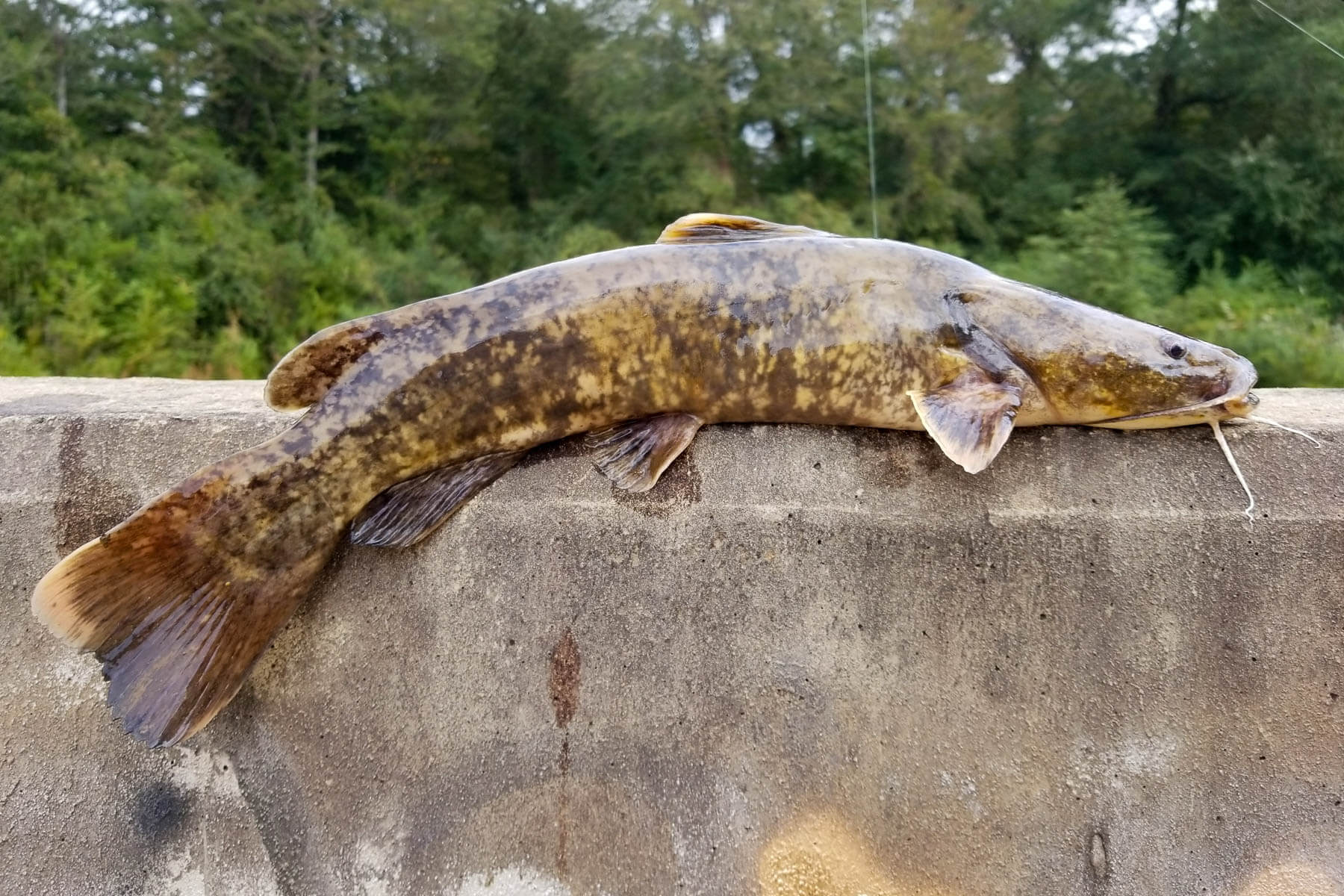
Also known as the yellow or mud catfish, the flathead catfish has a yellow to purple-brown body. They can reach lengths of three to four feet, weigh more than 100 pounds and live for up to 28 years. The species was introduced to the region in the 1960s as a recreational catch and is now considered an invasive species.
6. Blue catfish (Ictalurus furcatus)
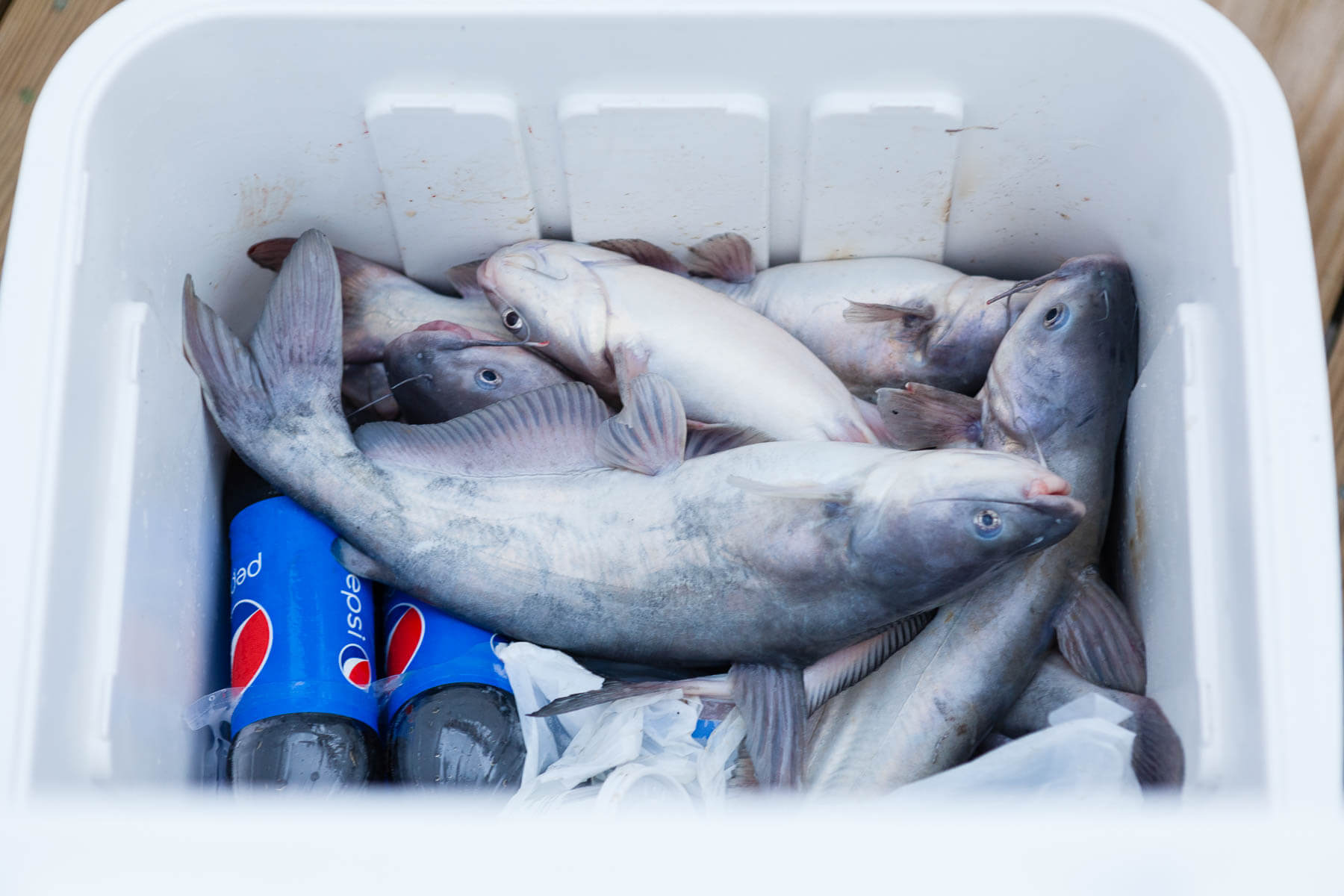
The blue catfish is a long fish with a slate blue body and deeply forked tail. Though they average two feet in length, they may grow up to five feet. The oldest blue catfish on record, found in Virginia’s Rappahannock River, was 25 years old. Blue catfish are native to the Mississippi, Missouri and Ohio river basins. Between 1974 and 1985, they were stocked in the James, Rappahannock and York Rivers in Virginia for recreational fishing.
Today, blue and flathead catfish can be found in almost every major tributary in the watershed. Both species have a long lifespan and an expansive diet, which can include crustaceans, worms and other fish. They are also tolerant of a wide range of salinities. Their growing numbers and rapid expansion throughout the region impact shad, menhaden, blue crabs and other native species that play an important role in our ecosystem and economy.
To help understand the threat of these fish, the Chesapeake Bay Program convened an Invasive Catfish Task Force made up of state and federal agencies, academic institutions and other stakeholders to discuss the best coordinated management options for controlling the spread and population growth of these species. The task force recently released two reports that synthesize what is known about invasive catfish and offer recommendations for managing their spread.
You can learn more about the impact of invasive species in the region through our website, and explore our Field Guide to learn about other critters in the watershed.

Comments
I found this very interesting and helpful!
I am new to cat fishing. I wish that a store like Bass Pro would offer classes on the best tackle and baits to use for catfish. I have learned a lot watching some Youtubes. I never would have dreamed of using hot dogs dipped in cool aid powder !!! I would be willing to buy some of the baits offered at Bass Pro but would like to know more about the types of bait they offer. I would do more cat fishing if I knew more. Being an old croaker and spot fisherman this is new to me. I LOVE cat fish sandwiches and look forward to catching and eating some cat fish this winter/spring. Now I also need to learn how to fillet them !!!!
Thank you!
Your comment has been received. Before it can be published, the comment will be reviewed by our team to ensure it adheres with our rules of engagement.
Back to recent stories